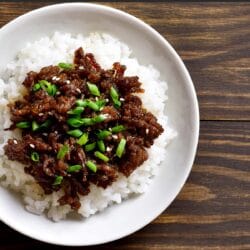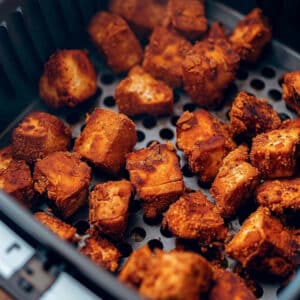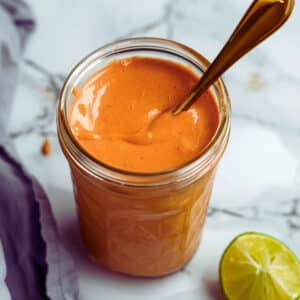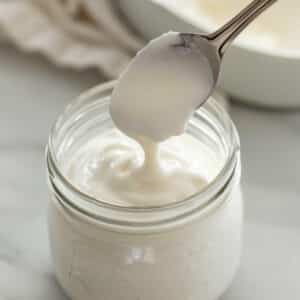Whether you're out of bulgogi sauce or just want to try something new, these delicious substitutes will hit the spot! From teriyaki sauce to unagi sauce, there's something for everyone on this list. So get ready to make some fantastic beef bulgogi dishes with these easy substitutions.
One of the most popular Korean dishes is Bulgogi, a beef dish often cooked on a barbecue. While the sauce used in Bulgogi is delicious, it can be hard to find ingredients sometimes. I know, I know. You've been craving Korean beef bbq for weeks now, and finally, you have all the ingredients...except for the bulgogi sauce. Don't worry; we've got you covered.
In this blog post, we will share bulgogi sauce substitutes and a bulgogi sauce recipe that is almost as good as the real thing. Plus, it's so easy to make.
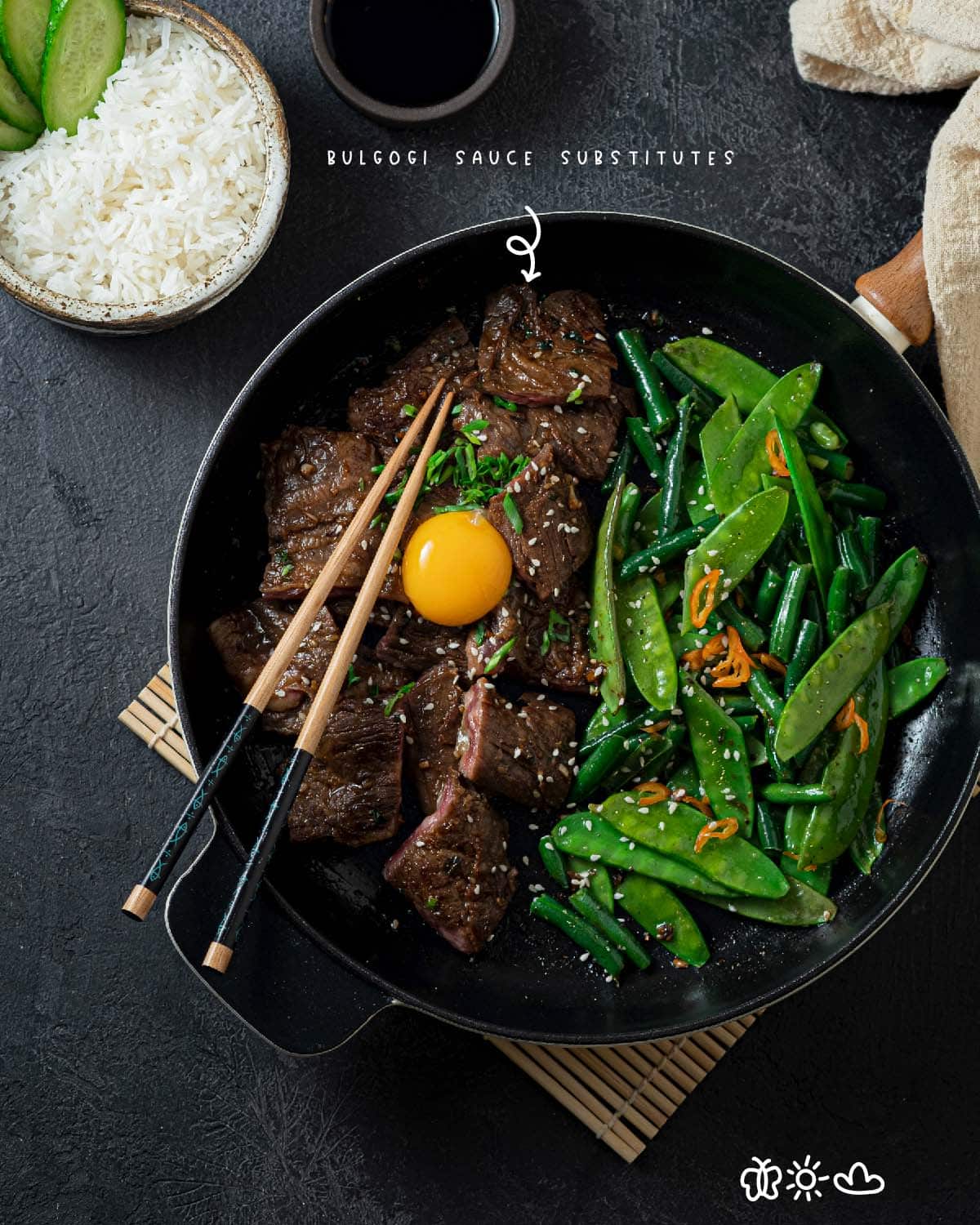
What is Bulgogi sauce?
Bulgogi sauce is a Korean BBQ sauce used as a marinade, basting sauce, or dipping sauce for meat. With the richness of the soy sauce, the sweetness of the honey or brown sugar, and the vinegar's acidity, this sauce also has a slight kick from the garlic and green onions. Asian pear juice lends a fruity, slightly floral flavor to the sauce and helps to tenderize the meat.
Bulgogi consists of two separate words, bul (fire) and Gogi (meat) refers to any kind of grilled or roasted meat in Korean cuisine. It means "fire meat" in Korean, and meats like chicken, beef and pork are traditionally grilled in this sauce. To clarify, Bulgogi is the word for the dish, while the term for the sauce is sosu (소스).
The traditional Bulgogi recipe calls for thinly sliced beef marinated in a mixture of soy sauce, garlic, sugar, and other seasonings and then grilled over charcoal. As a result, the meat remains juicy and delicious during cooking. This dish often involves cooking over an open flame, which is not surprising. These days, it is more common to see it made with chicken or pork, and it is often stir-fried rather than grilled.
Read:
Where to buy it?
You can find Bulgogi sauce in the international aisle of most grocery stores, most Asian supermarkets, or online like Amazon. It is also sometimes called Korean BBQ sauce or Korean barbecue sauce. If you cannot find bulgogi sauce, a few substitutes will work just as well.
How does bulgogi sauce work?
The main ingredients in traditional bulgogi sauce are soy sauce, brown sugar or honey, pear juice, rice vinegar, garlic, ginger, green onion, and black pepper. These ingredients work together to give the sauce a sweet, savory, and slightly spicy flavor.
The soy sauce adds saltiness and umami flavor, while the honey adds sweetness. The pear juice not only adds sweetness and flavor to the meat but also tenderizes it. The rice vinegar adds acidity, while the garlic and green onion add a slight spiciness. The black pepper adds a bit of heat. It is optional to add ginger to the sauce, but it does add a bit of zing.
When used as a marinade, the sauce helps to tenderize the meat and infuse it with flavor. Acidity in the sauce softens the meat by breaking down its fibers. The sauce's sweetness and saltiness also help create a flavorful crust on the meat's exterior when it's grilled or barbecued.
What does bulgogi sauce taste like?
Bulgogi sauce tastes sweet, salty, slightly spicy, and somewhat acidic. The soy sauce adds saltiness and umami flavor, while the brown sugar adds sweetness. The pear juice not only adds sweetness and flavor but also helps to tenderize the meat. The rice vinegar gives the sauce a slightly acidic taste, while the gochugaru (Korean red pepper flakes) add a touch of spice, but this is optional. Overall, the sauce is well-balanced with a complex flavor profile.
6 Bulgogi sauce substitutes
It's a well-known fact that bulgogi sauce is delicious. It's rich, deep in flavor, and has a hint of sweetness that makes it perfect for marinating meats. However, there are times when you may not have bulgogi sauce on hand, or you may be looking for a healthier alternative.
If you're one of those unfortunate people who doesn't live near a Korean grocery store, or if you just don't feel like trekking out to one, never fear! There are plenty of substitutes for bulgogi sauce that are just as delicious. I've compiled a list of six of the best substitutes for you.
Here are six bulgogi sauce substitutes that are surprisingly delicious:
1 Teriyaki sauce:
The closest in flavor to bulgogi sauce, teriyaki sauce is a great substitute. It's sweet and savory, with a hint of sourness, and it goes great with beef. It is a Japanese sauce made with soy sauce, sugar, Mirin (rice wine), and ginger. The similarity in sweetness and flavor means that it is an ideal substitute for bulgogi sauce and is effective as a marinade, basting sauce, and dipping sauce.
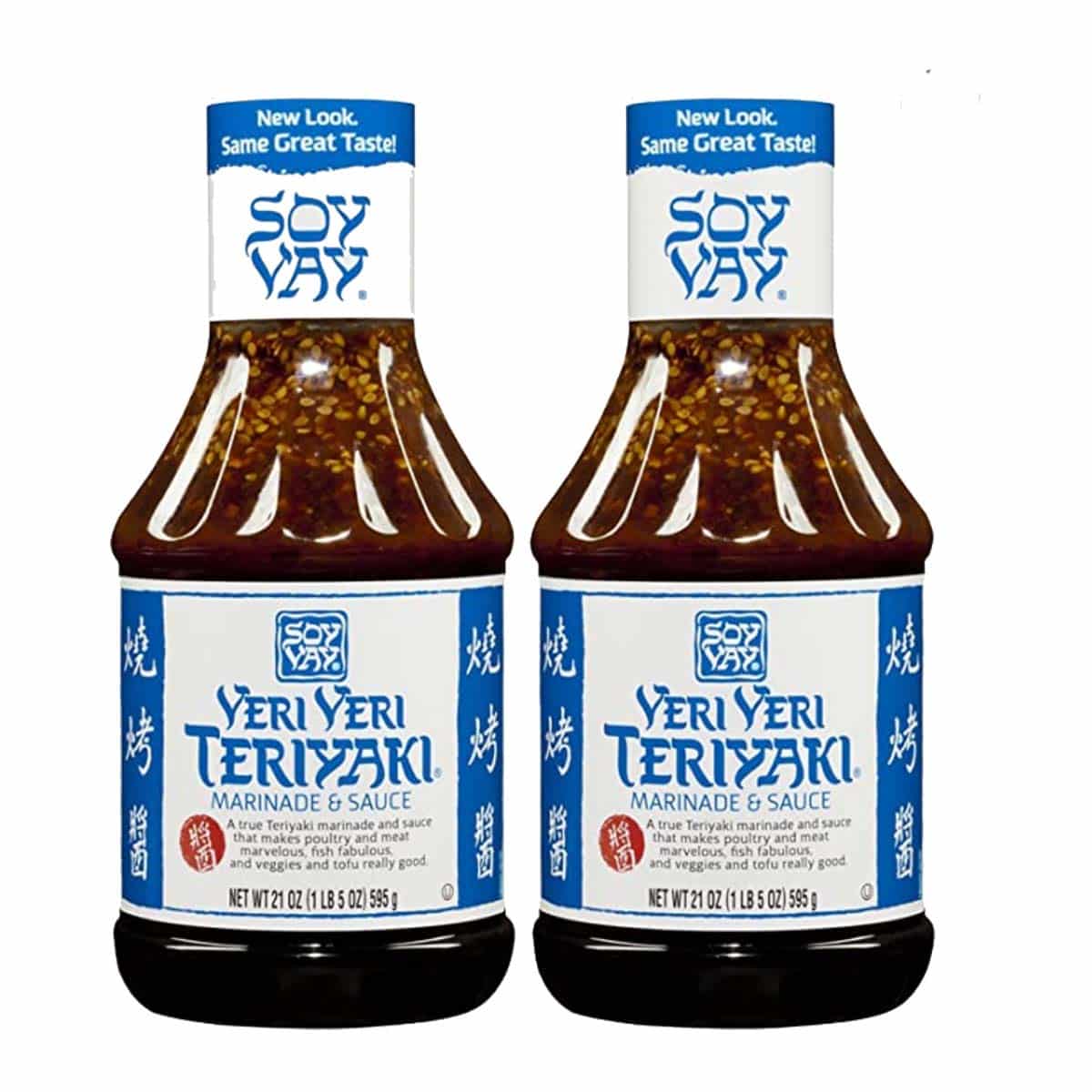
Why is that similar?
Bulgogi sauce also has a form of sweetener called brown sugar. The sweetness in the Teriyaki comes from Mirin, a form of rice wine. The rice wine and ginger lend a slightly different flavor to teriyaki sauce, but it is still a delicious alternative to bulgogi sauce. Besides the Mirin, the other main ingredient in Teriyaki is soy sauce. Soy sauce is also a key player in the Bulgogi marinade.
What does it taste like?
Teriyaki has a sweeter flavor than bulgogi sauce because of the Mirin, but it also has that umami quality from the soy sauce. Also, since it has ginger, there is a slight zing to the flavor.
Both are sweet, salty, and a little sticky – making them perfect for grilled meats. The ease of finding these ingredients is what also makes this a great substitute.
2 BBQ sauce:
Often found in the pantry, BBQ sauce is an excellent substitute for Bulgogi. It's thick and sticky, with a deep smoky flavor that comes from the addition of liquid smoke. It also has a sweetness from the sugar used as the main ingredient. This sauce is perfect for those who want a less sweet substitution than bulgogi sauce.
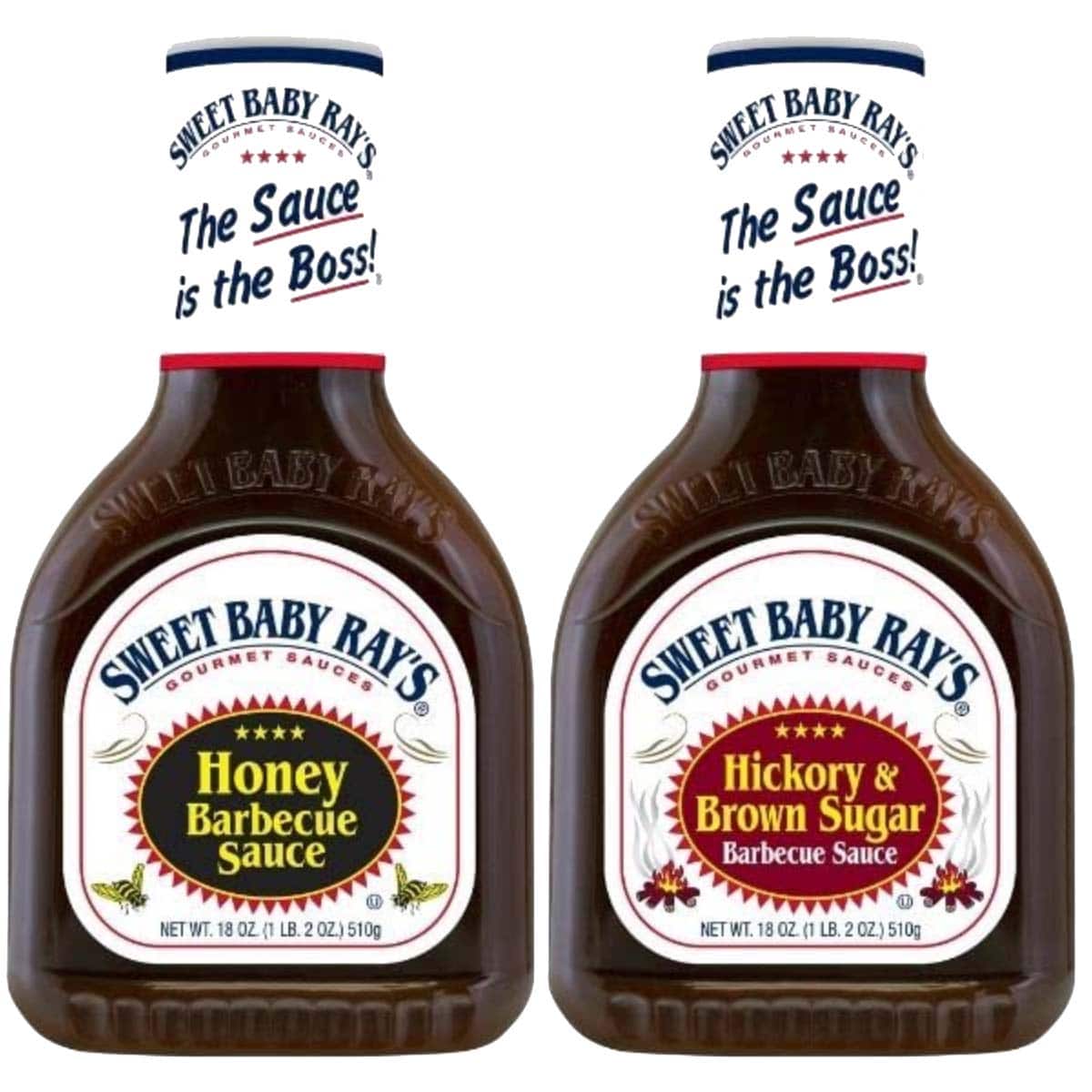
Why is that similar?
The key similarity between BBQ sauce and Bulgogi sauce is the smokey flavor. They both have a deep rich flavor that comes from the caramelization of the sugars. You can achieve this by using liquid smoke in BBQ sauce and grilling the meat in Bulgogi.
What does it taste like?
The smokiness of the BBQ sauce is the most prominent flavor, followed by a sweetness from the sugar. Vinegar, one of the ingredients, gives it a slight tang.
3 Hoisin sauce:
A staple in Chinese cuisine, hoisin sauce is made from various ingredients, including fermented soybeans, sugar, vinegar, and spices. It is thick and sweet, with a slightly spicy kick. Hoisin sauce makes a great marinade, glaze, or dipping sauce.
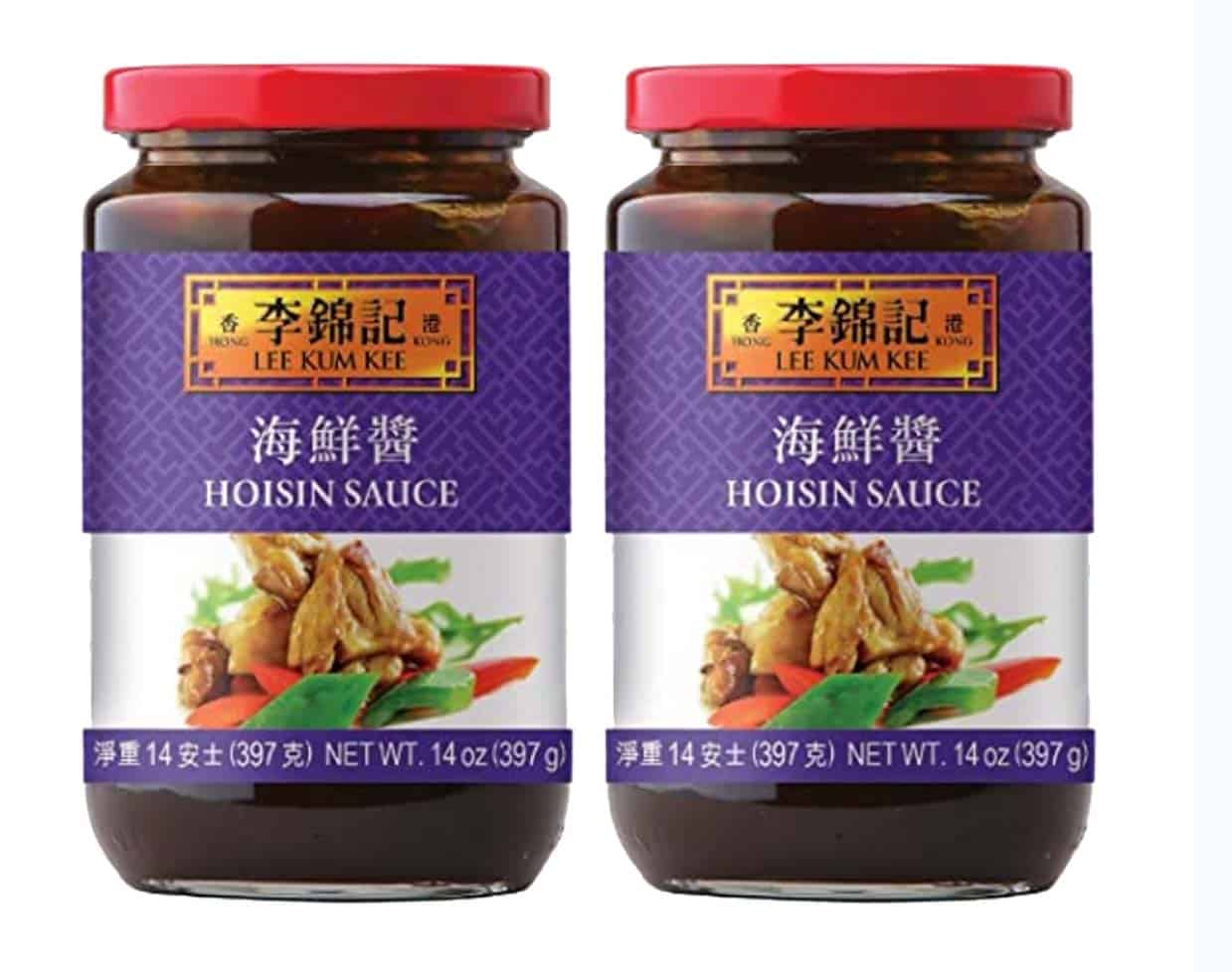
Why is that similar?
As a Bulgogi substitute, hoisin sauce has soybeans as a key ingredient. It gives it that same umami flavor that Bulgogi marinades have. Sugar, vinegar, and garlic balance the sweetness and provide a similar taste. In comparison, the thick consistency of hoisin sauce makes it a suitable replacement for bulgogi sauce.
What does it taste like?
The texture of hoisin sauce is thick and sweet, with a slight saltiness. The prominent flavor comes from the fermented soybeans, which give it a savory taste. Subtle spiciness is also present due to the addition of chili peppers. It tastes like American-style bbq sauce with a Chinese twist but much less smoky. The vinegar gives it a slightly tangy taste, and the thickness makes it perfect for glazing meat or using as a marinade.
4 Sweet and sour sauce:
Soy sauce, vinegar, sugar, and ketchup make up the sweet and sour sauce. It is similar to bulgogi sauce in terms of sweetness and sourness and works as a marinade, dipping sauce, or basting sauce.
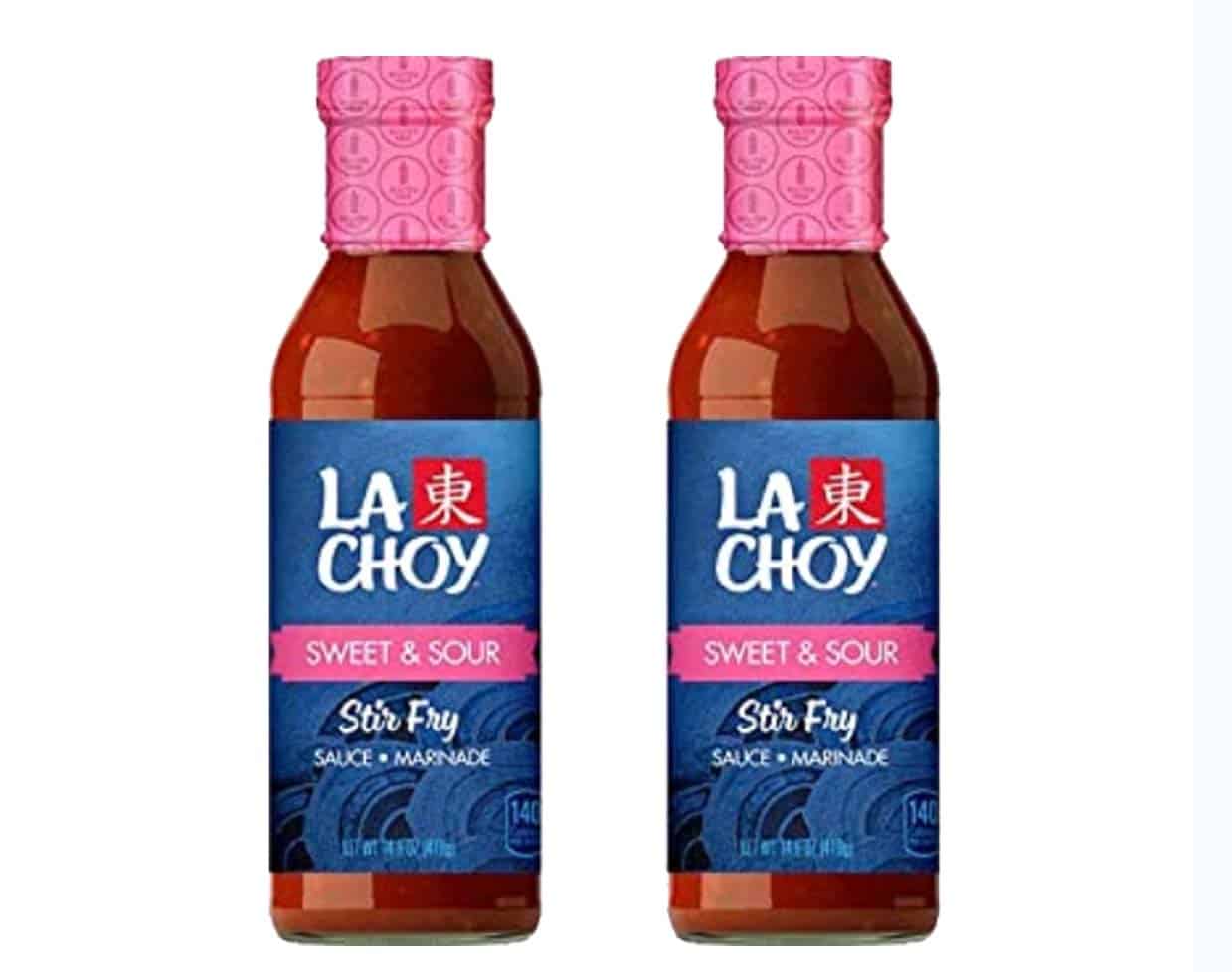
Why is that similar?
Several uses are possible for the sweet and sour sauce, including marinade, basting sauce, or dipping sauce. The main ingredient in sweet and sour sauce that makes it a good Bulgogi substitute is vinegar. As a result, it has the same tangy and tart flavor as Bulgogi marinade. The other ingredients like sugar, ketchup, and soy sauce balance the sweetness and create a similar taste.
What does it taste like?
The taste of the sweet and sour sauce perfectly balances the sugar's sweetness and the vinegar's sourness. The ketchup gives it a slightly tomato-y flavor with a slightly thick consistency, and the soy sauce adds a savory depth of flavor. The sauce is thick and perfect for glazing meat or using as a marinade.
5 Unagi sauce:
Unagi sauce is a Japanese eel sauce made with soy sauce, Mirin, sugar, and rice vinegar. As a marinade, basting sauce, or dipping sauce, it has a similar sweet and salty flavor to bulgogi sauce.
In Japan, unagi sauce is commonly known as eel sauce because it is traditionally used to grill eel, drizzling over it or using it in meals featuring the fish. That's it! Just four ingredients go into the sauce (no eel!): soy sauce, sake, sugar, and Mirin.
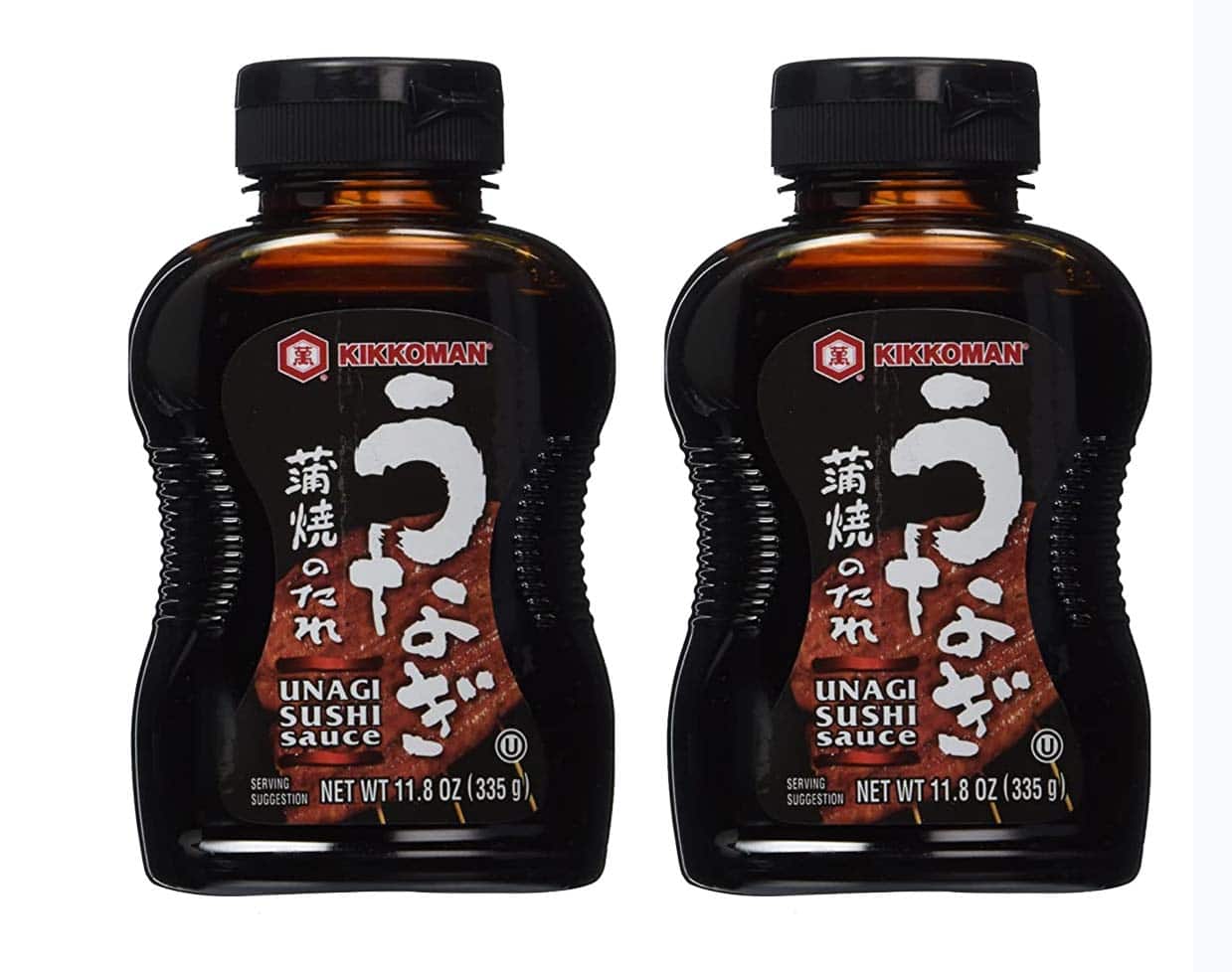
Do they have anything in common?
The similarity between unagi sauce and bulgogi sauce comes from the fact that they are both sweet and salty with a similar flavor profile. Unagi sauce comes from Japan, while bulgogi sauce hails from Korea. These sauces are used as marinades, basting sauces, or dipping sauces.
How does it taste?
As with bulgogi sauce, unagi sauce has a sweet and salty flavor profile. It is made with soy sauce, Mirin, sake, and sugar and has a distinct flavor and thick consistency that is perfect for grilling or drizzling over eel.
6 Kalbi or Galbi sauce:
Kalbi or Galbi sauce is a Korean BBQ sauce containing soy sauce, sugar, rice vinegar, garlic, and ginger. It has a similar sweet and savory flavor to bulgogi sauce and is suitable for marinating, basting, and dipping.
With this sauce, you can enjoy the flavor of Bulgogi without the heat. Making the sauce at home is easy since it uses pantry staples. The key ingredients in this sauce are soy sauce, sugar, and rice vinegar.
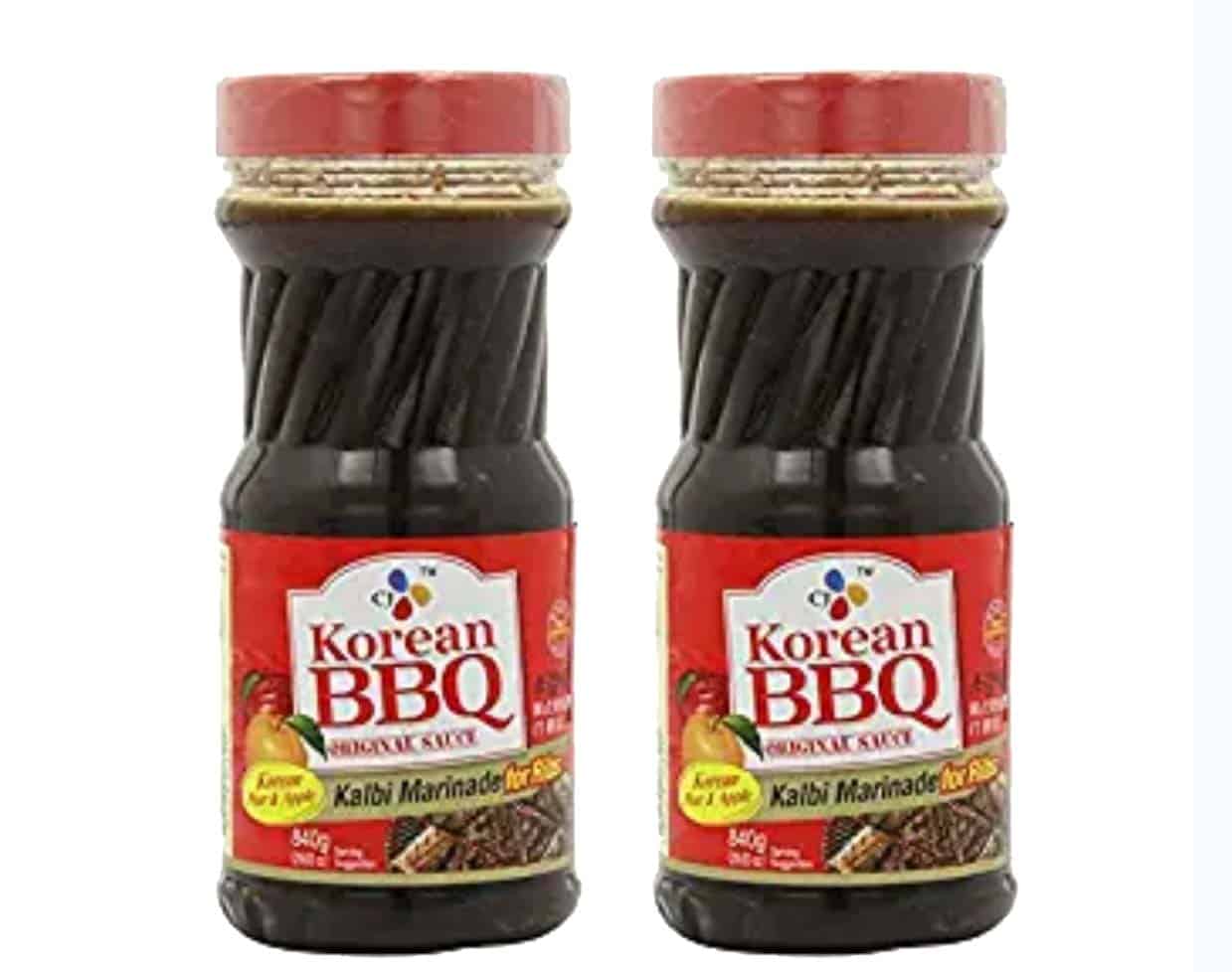
How does Kalbi or Galbi sauce compare to bulgogi sauce?
In addition to having a similar flavor profile, Kalbi or Galbi sauce and bulgogi sauce are both sweet and savory. Among the ingredients of galbi sauce are soy sauce, sugar, rice vinegar, garlic, and ginger.
What does it taste like?
In addition to being savory, Kalbi sauce has a slight sweetness. Besides soy sauce, sugar, Mirin, and sesame oil, soy sauce is the main flavoring agent. It has a thick consistency and clings well to the meat.
Kalbi sauce is the perfect finishing touch for Korean BBQ. The sweet and savory flavors complement the grilled meat nicely. The sauce is also great for dipping.
7 Ponzu sauce
Citrus-based Ponzu sauce is a typical Japanese condiment. It consists of soy sauce, rice vinegar, Mirin, and citrus juice (usually yuzu or lemon). With its tart and tangy flavor, Ponzu sauce is a perfect substitute for Bulgogi sauce. Ideal for those who do not like their food to be too sweet! It has a thinner consistency than most sauces, so it might not be the best option if you're looking for a thick and glazy sauce.
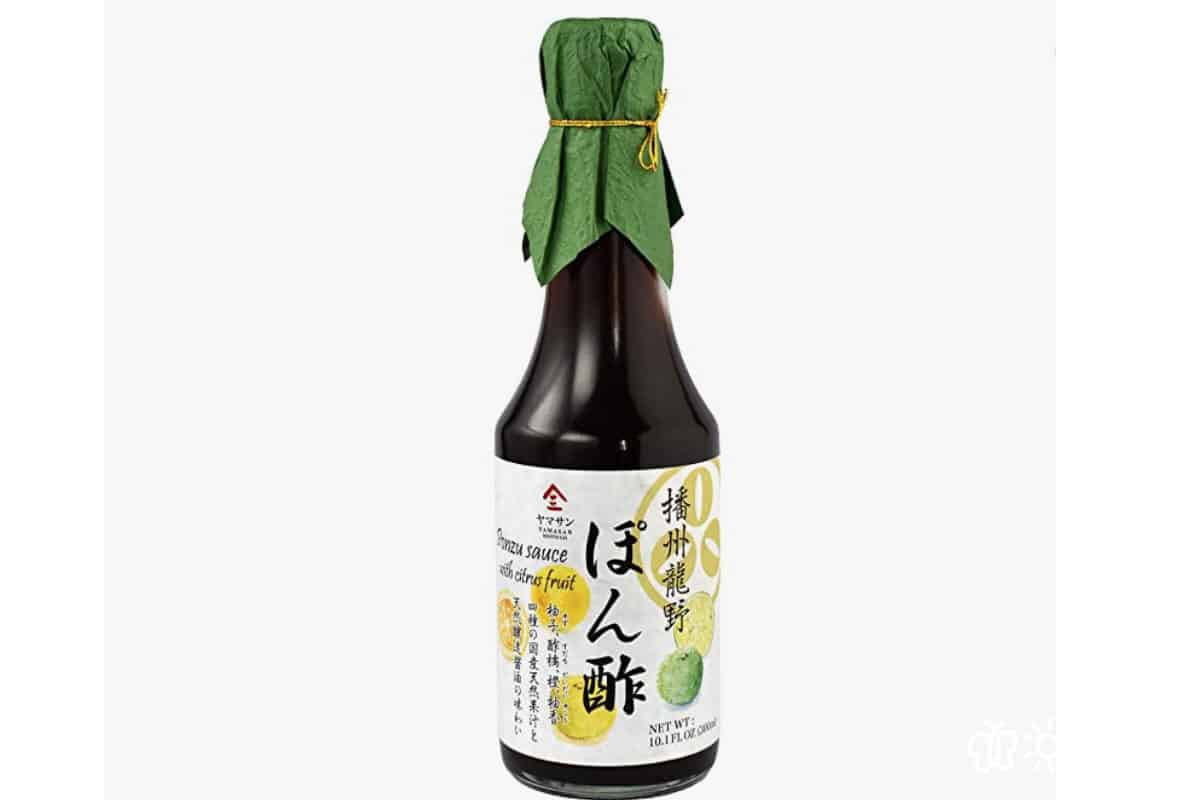
What makes ponzu sauce a good substitute?
Because of its tangy and slightly sweet flavor, ponzu sauce provides a satisfactory alternative to bulgogi sauce. Additionally, ponzu sauce is less salty than soy sauce, a key ingredient in bulgogi sauce. Thus, ponzu can help reduce the saltiness of the overall dish. Another point to note is that ponzu sauce tends to be less sweet than bulgogi sauce, so that it can be more savory.
How does ponzu sauce taste?
Ponzu sauce has a sour, tangy taste with a hint of sweetness. This sauce consists of citrus juices (usually lemon or yuzu), rice vinegar, Mirin (a Japanese cooking wine), and soy sauce. Sometimes, dashi (a type of fish broth) or bonito flakes are added to the sauce. It is used as a dipping sauce or dressing and is also a popular ingredient in many Japanese dishes.
You can use Ponzu sauce as a marinade, a dipping sauce, or even as a dressing. It is versatile and easy to find in most Asian supermarkets.
Ways to use Korean bulgogi sauce
1 As a marinade for Bulgogi (Korean BBQ beef).
The sauce has a strong flavor that can penetrate the meat and infuse it with flavor. Besides Bulgogi, you can also use the sauce to marinate chicken, pork, or shrimp.
2 For grilling meats as a basting sauce.
You can brush the sauce on meat while it is grilling to add flavor and prevent it from drying out.
3 To serve as a Korean barbecue dipping sauce.
You can use Bulgogi sauce for dipping meat or vegetables on the grill. I like to use it as a dipping sauce for my bulgogi wraps, dumplings, or even spring rolls.
4 In stir fry.
You can add flavor to a stir fry with bulgogi sauce. I like to use it in my beef and broccoli stir fry. Also, it can be used as a base for Korean stews and soups.
5 As a condiment.
The bulgogi sauce is a great condiment for bulgogi wraps and rice bowls. As a result of its strong flavor, the sauce can elevate the flavors of dishes. You can also use it as a condiment with Korean BBQ.
6 As a glaze.
You can glaze meat or vegetables with bulgogi sauce. The sauce can be brushed on meat or vegetables before grilling or baking to add flavor and color. The sugar in the sauce will caramelize and create a delicious glaze.
7 As a salad dressing.
The sauce can be used as a salad dressing or added to coleslaw for extra flavor. The sauce has a sweet and savory flavor that goes well with salads.
How to make bulgogi sauce
Making your bulgogi sauce is a lot easier than you might think. All you need are a few simple ingredients and a bit of time to let the flavors meld together. This recipe sauce is perfect for marinating beef, chicken, or pork before grilling or stir-frying. It's also great as a dipping sauce or to add extra flavor to your favorite Korean dishes.

Grab these ingredients
- ½ cup water
- 4 tablespoon soy sauce
- 4 tablespoon pear juice (or substitute with apple juice or kiwifruit puree)
- 2 tablespoon sesame oil
- 2 teaspoon sugar
- 2 teaspoon garlic chopped finely
- 2 teaspoon ginger chopped finely
- 1 teaspoon black pepper
1 Korean soy sauce:
This is a different soy sauce style made with soybeans, salt, and water. It has a more earthy flavor than Chinese soy sauce. The soybeans in the sauce add a depth of umami flavor, while the salt brings out the natural beefiness of the meat.
You can find it at an Asian grocery store or online. If you can't find it, you can use Japanese tamari, coconut aminos, or any other soy sauce you have on hand.
2 Pear juice:
Pears are a traditional ingredient in bulgogi sauce. They add sweetness and help to tenderize the meat. Pears contain an enzyme called pectinase, which breaks down the connective tissues in meat. This is the secret ingredient that makes this sauce taste so authentic! If you can't find pear juice, you can use apple juice or pineapple juice instead to add sweetness.
3 Brown sugar:
Sugar is a natural meat tenderizer, so it will help to make your Bulgogi extra juicy and delicious! Brown sugar adds sweetness and depth of flavor to the sauce. You can use light or dark brown sugar, depending on your preference.
4 Garlic:
Bulgogi sauce contains a lot of garlic as it adds flavor and depth of flavor to the sauce. Garlic contains a sulfur compound called allicin. When garlic is chopped or crushed, this compound is released, which gives it its characteristic flavor. Allicin reacts with the other ingredients in the sauce to create new flavor compounds.
5 Ginger:
The addition of ginger is what makes this sauce taste like Bulgogi. It adds a zesty flavor that is essential to the dish. Cooking ginger releases an enzyme called zingibain. This enzyme breaks down the proteins in the sauce, creating new flavor compounds.
6 Sesame oil:
What would Korean food be without sesame oil? This ingredient is used in various dishes, from bibimbap to banchan, and gives food a nutty and slightly sweet flavor. If you don't have sesame oil on hand, you can substitute it with vegetable oil or olive oil.
7 Green onion:
Adding green onion to Bulgogi is not only for decoration - it enhances the dish's flavor. The onion's pungent flavor helps balance the meat's and sauce's sweetness. It also adds a bit of crunch. If you don't have green onion, you can use chives or shallots as a substitute.
8 Sesame seeds:
Often used as a garnish, this ingredient also adds a nutty taste to dishes. Sesame seeds have a natural oil that is released when they are toasted. This oil adds flavor and depth to the dish. Also, the texture of the seeds adds a nice contrast to the meat and vegetables. If you don't have sesame seeds, you can use pumpkin seeds.
9 Black Pepper:
A little bit of black pepper is all you need to add a bit of spice to the sauce. Black pepper contains a compound called piperine. This compound is responsible for the spicy flavor of black pepper. It also helps to enhance the other flavors in the sauce.
Now that you have all the ingredients, it's time to cook!
Step-by-step instructions:
Step 1
Combine all of the ingredients in a bowl except for the sesame oil, green onions, and sesame oil. Or you can use a blender or food processor and blend until smooth.
Step 2
Taste the sauce and adjust the seasoning as needed. Add more salt if it needs it or more sugar if you want it to be sweeter.
Step 3
Pour the sauce into a pan over medium heat. Bring the sauce to a simmer and cook for 2 minutes, or until the mixture slightly thickens.
Step 4
Remove the sauce from the heat and stir in the sesame oil, sesame seeds, and green onion.
Step 5
Let the mixture cool slightly before using. You can use the sauce as a marinade for Bulgogi or as a dipping sauce for Korean BBQ. Or you can store it in the fridge for later.
Pro tips when using the bulgogi sauce:
- When marinating meat with the sauce, allow it to marinate for at least 30 minutes or overnight. As a result, the meat will become tender and flavorful.
- If you are using the sauce as a dipping sauce, make sure to taste it before you start dipping. The sauce may be spicy, so you may want to add more sugar or honey to balance the heat.
- It is possible to store the sauce for up to two weeks in the refrigerator. Just make sure to give it a good stir before using.
- If the sauce is too thick, you can thin it out with a bit of water. Or you can add more oil to make it richer.
Is Korean BBQ sauce the same as bulgogi sauce?
The answer is no. Korean BBQ sauce is not the same as bulgogi sauce. Bulgogi sauce is a sweeter and tangier sauce typically made with soy sauce, sugar, pear puree (or pear juice), garlic, and sesame oil. It is used as a marinade for beef dishes like Bulgogi but can also be used as a dipping sauce or in other Korean cooking.
On the other hand, Korean BBQ sauce is a savory and smoky sauce made with gochujang (Korean chili paste), soy sauce, rice wine vinegar, sugar, garlic, and sesame oil. It is used as a dipping sauce for grilled meats or in other Korean cooking.
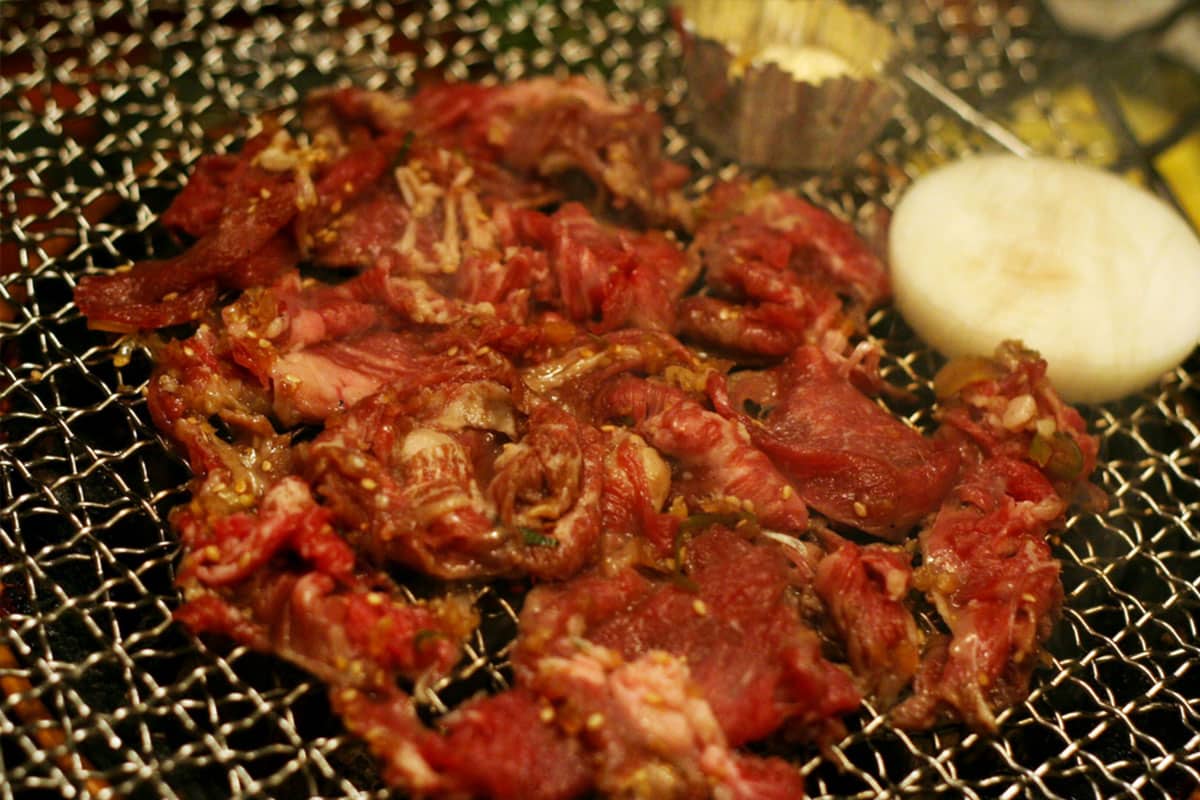
Why is that?
The main difference between bulgogi sauce and Korean BBQ sauce is the sweetness. Bulgogi sauce is sweeter than Korean BBQ sauce because of the addition of honey and fruit purees like an Asian pear. This sweetness pairs well with the savory flavors of the meat, making it a perfect match for Bulgogi.
Korean BBQ sauce, on the other hand, is less sweet and has a more complex flavor profile due to the addition of different spices and herbs. While it can be used as a substitute for bulgogi sauce, it will not have the same sweetness or depth of flavor.
What gives Bulgogi its flavor?
In traditional Korean cuisine, Bulgogi is a marinated beef dish. Also, because the beef is marinated, it tends to be very tender and juicy, making it a delicious and easy-to-eat dish. This combination of flavors gives Bulgogi its signature savory-sweet-umami flavor profile.
Here are a few key ingredients that give Bulgogi its distinct flavor.
- Soy sauce. Soy sauce is salty and umami-rich, and it helps to balance out the sweetness of the other ingredients.
- Sugar. Sugar helps to caramelize the meat during cooking, and it also adds a touch of sweetness to the dish.
- Asian pear puree. The Asian pear puree helps tenderize the meat and adds a touch of sweetness.
- Sesame oil. Sesame oil adds a nutty flavor and a touch of richness to the dish.
- Garlic. By adding garlic, sweetness is offset by a pungent taste.
- Green onion. This dish is enhanced with a touch of freshness and mild flavor thanks to the green onion.
- Black pepper. Black pepper adds a bit of heat and a touch of spice to the dish.
Is Korean BBQ sauce similar to teriyaki sauce?
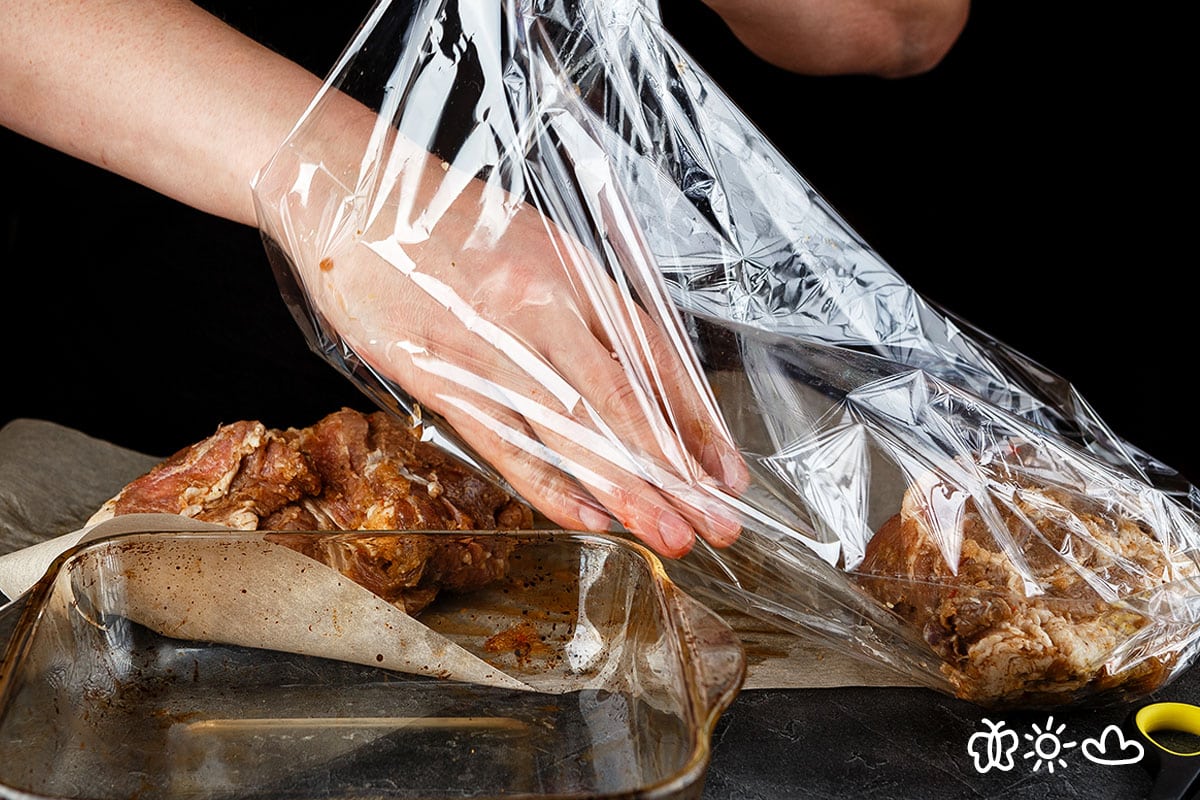
Both sauces share some similarities, but they aren't identical. A typical Teriyaki sauce consists of soy sauce, sugar, sake or Mirin, and ginger. In contrast, Korean BBQ sauce usually has a spicy kick and includes ingredients like gochujang (chili paste), soy sauce, and brown sugar. Although both sauces are excellent for grilling and adding a delicious flavor to meats, they are not interchangeable in recipes.
The main difference between the two sauces is the addition of gochujang in Korean BBQ sauce. This chili paste gives the sauce a distinctively spicy flavor that you would not find in Japanese teriyaki sauce. In addition, Korean BBQ sauce often contains other ingredients like green onions, garlic, sesame oil, and rice vinegar, which all contribute to its unique taste.
So if you are looking for a sauce to use in a Korean BBQ recipe, make sure to use Korean BBQ sauce and not teriyaki sauce. However, if you are in a pinch and don't have any Korean BBQ sauce on hand, you could try using a mixture of teriyaki sauce and gochujang chili paste. You won't get the authentic Korean BBQ flavor, but it will still be tasty!
Is Kalbi sauce the same as bulgogi sauce?
Regardless of the variations, most bulgogi sauces contain similar key ingredients, including soy sauce, sugar, pear puree, sesame oil, garlic, and green onions. Kalbi sauce may have some of these same ingredients, but it also contains Korean pear juice and/or honey, giving it a slightly sweeter flavor.
Despite sharing many similar ingredients, the difference lies in their proportions and adding other flavors. For example, some bulgogi sauces may contain gochujang (red pepper paste), while others might add Mirin (a sweet rice wine) or rice vinegar. Otherwise, soy sauce, sugar, and garlic flavors will be most prominent in both sauces.
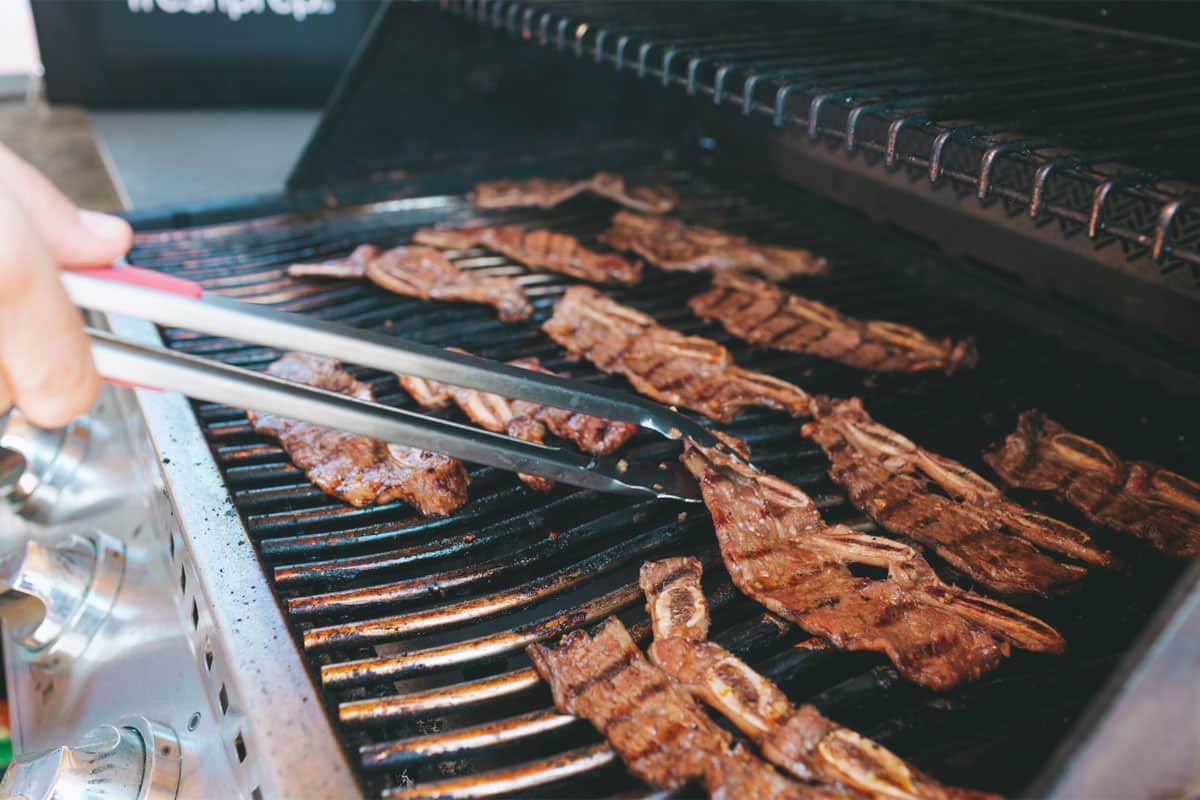
Another interesting point has to do with the cuts used for each dish. Bulgogi is typically made with thinly sliced Rib-eye or sirloin, while Kalbi is made with short ribs that have been cut across the bone into thin strips. The different cuts will also affect the final flavor of the dish.
Hence, when preparing Bulgogi, marinating the meat in the sauce tenderizes and flavors it, whereas the sauce is usually used for cooking Kalbi. By adding vinegar or pear juice to the sauce, acid breaks down tough collagen fibers, resulting in a more tender final product.
The marinade for Bulgogi is usually less sweet than the sauce used for Kalbi, making it easier to penetrate the meat and tenderize it over time. On the other hand, Kalbi is typically cooked in a sweeter sauce, which caramelizes on the surface of the meat as it cooks, giving it a slightly charred flavor.
So, while you could use kalbi sauce instead of bulgogi sauce (or vice versa), the final flavor of your dish may be slightly different. If you're looking to replicate the taste of traditional Bulgogi or Kalbi, it's best to use the appropriate sauce for each dish.
Frequently asked questions (FAQ):
If you're one of the many people who have asked for a Bulgogi sauce substitute, you've come to the right place! FAQs are one of the best ways to get information about a topic, and this one is no exception.
You can store bulgogi sauce for up to 2 weeks in the fridge. The sauce will thicken as it cools, so you may need to add a little water to thin it out before using. You can also freeze bulgogi sauce for up to 3 months.
If you don't have bulgogi sauce, you can use a combination of soy sauce, rice vinegar, brown sugar, sesame oil, garlic, and ginger. This will give you a similar flavor to bulgogi sauce.
Yes! Bulgogi sauce is great on rice, noodles, vegetables, and meat. You can also use it as a dipping sauce or marinade.
Homemade bulgogi sauce will last in the fridge for up to 2 weeks.
Store-bought bulgogi sauce will last for 6 months when stored in a cool, dark place.
The best way to reheat bulgogi sauce is in the microwave. Heat it on low power in 30-second increments, stirring in between, until it's heated through. You can also reheat it on the stove over low heat.
It depends on the ingredients used to make the sauce. Soy sauce, which contains gluten, is typically used to make bulgogi sauce. However, there are many brands of gluten-free soy sauce on the market, so be sure to check the label if you're allergic or sensitive to gluten. You can also make your gluten-free bulgogi sauce using tamari (a gluten-free soy sauce).
Bulgogi is way better. The main reason is the marinade. The marinade makes the beef more tender and infuses flavor into the meat. A typical marinate time for Bulgogi is 30 minutes, but the longer you marinate, the more flavorful the meat will be. No comparison.
Full Recipe
Bulgogi Sauce recipe
Pin RecipeEquipments:
- pot
Ingredients:
- ½ cup water
- 4 tablespoon soy sauce
- 4 tablespoon pear puree (or substitute with apple puree or kiwifruit puree)
- 2 tablespoon sesame oil
- 2 tablespoon brown sugar
- 2 teaspoon garlic (finely chopped)
- 2 teaspoon ginger (finely minced)
- 1 teaspoon black pepper
Instructions:
- Combine all of the ingredients in a bowl except for the sesame oil, green onions, and sesame seeds. Or you can use a blender or food processor and blend until smooth.
- Taste the sauce and adjust the seasoning as needed. Add more salt if it needs it or more sugar if you want it to be sweeter.
- Pour the sauce into a pan over medium heat. Bring the sauce to a simmer and cook for 2 minutes, or until the mixture slightly thickens.
- Remove the sauce from the heat and stir in the sesame oil, sesame seeds, and green onion.
- Let the mixture cool slightly before using. You can use the sauce as a marinade for Bulgogi or as a dipping sauce for Korean BBQ. Or you can store it in the fridge for later.
Notes:
Pro tips when using the bulgogi sauce:
- When marinating meat with the sauce, allow it to marinate for at least 30 minutes or overnight. As a result, the meat will become tender and flavorful.
- If you are using the sauce as a dipping sauce, make sure to taste it before you start dipping. The sauce may be spicy, so you may want to add more sugar or honey to balance the heat.
- It is possible to store the sauce for up to two weeks in the refrigerator. Just make sure to give it a good stir before using.
- If the sauce is too thick, you can thin it out with a bit of water. Or you can add more oil to make it richer.
Nutrition Information:
Please note that all nutrition information are just estimates. Values will vary among brands, so we encourage you to calculate these on your own for most accurate results.

